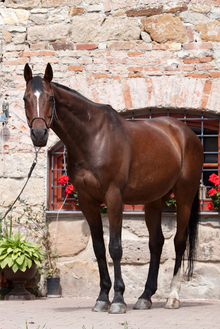In their Fall Health News Flash, Equine Guelph features an article by Dr. Brianne Henderson "Legs: Common injuries and how we can treat them" as the third part of a series on achieving maximum health and activity for sport horses.

Recognizing importance of horse leg health
Every year riders are plagued with limb injuries to their equine partners. Sometimes this is a small blip in the training schedule, other times it spells the end of a competitive season.
"Every year riders are plagued with limb injuries to their equine partners. Sometimes this is a small blip in the training schedule, other times it spells the end of a competitive season. In this article we are going to highlight some common injuries and different modalities that can help your horse onto the road to recovery (and a few preventative tips!)".
Beginning with the suspensory ligament and describing what it is, its purpose and importance, the article goes on to discuss the entire musculoskeletal anatomy of the legs of the horse and how all parts must work together to maintain maximum performance and good horse health.
Dr. Henderson also discusses what happens when various parts of the horse's leg anatomy break down, how they affect the workings of the legs, and veterinarian treatment for the conditions causing lameness and affecting the horse's performance.
In addition to the suspensory ligament, Dr. Henderson discusses the stifle, sacro-iliac damage, and proper identification and treatment of primary lameness issues as the first step in getting a horse on the road to recovery.
"At the end of the article, there is a table outlining different treatments to help manage the injuries discussed."
Story by: Dr. Brianne Henderson
